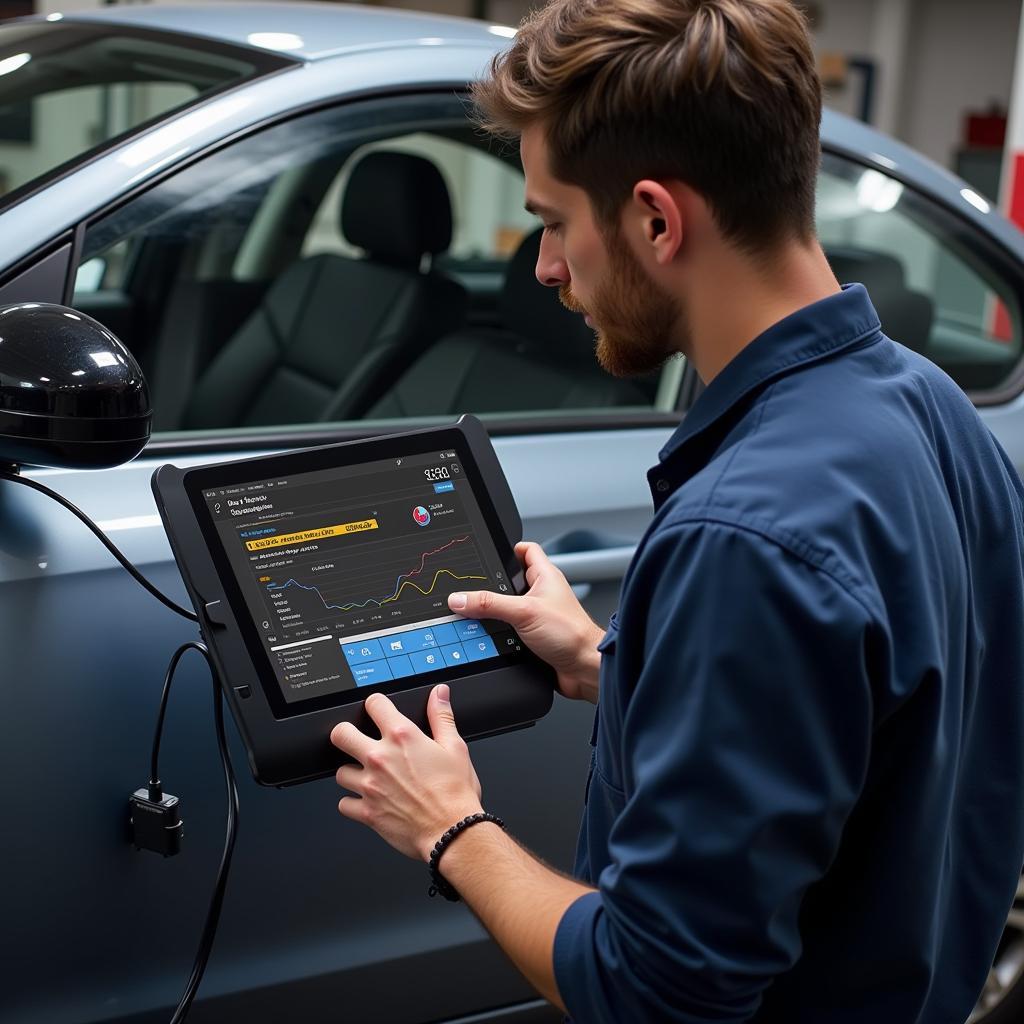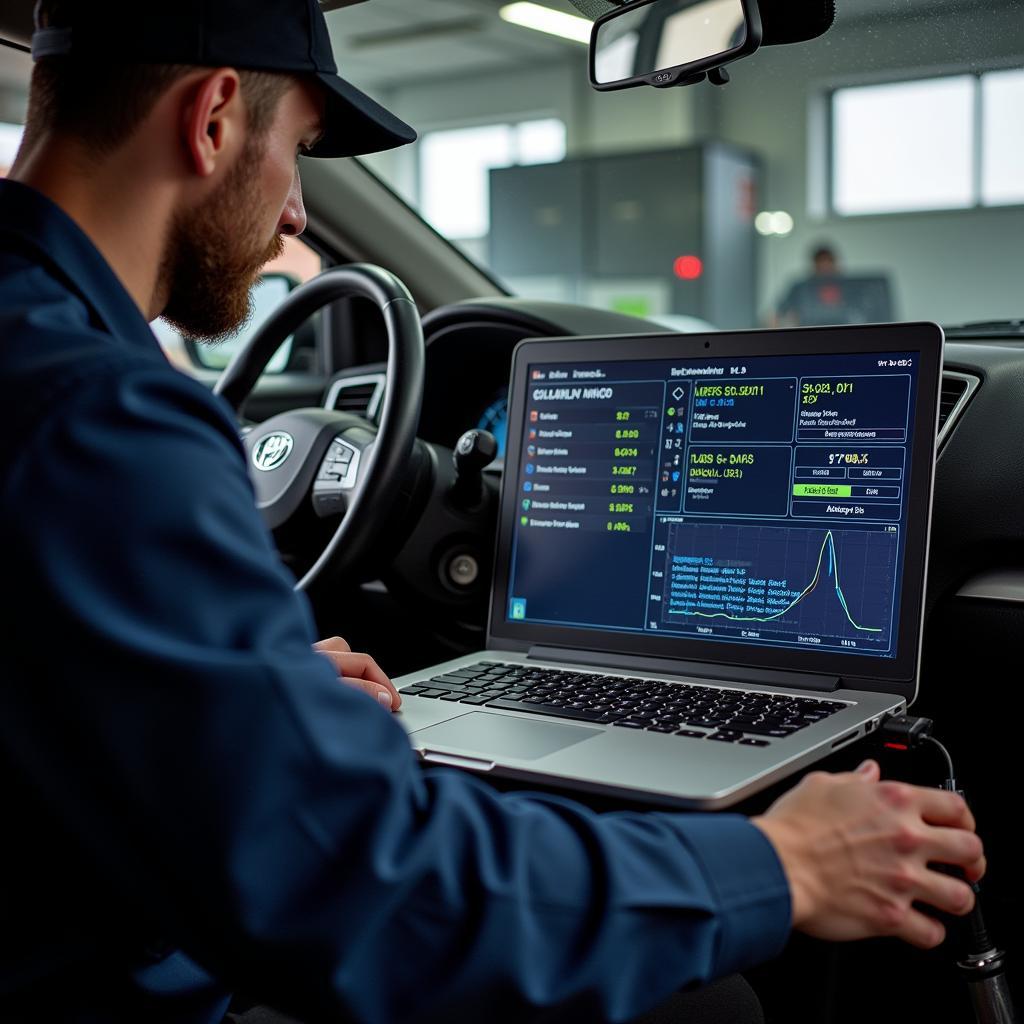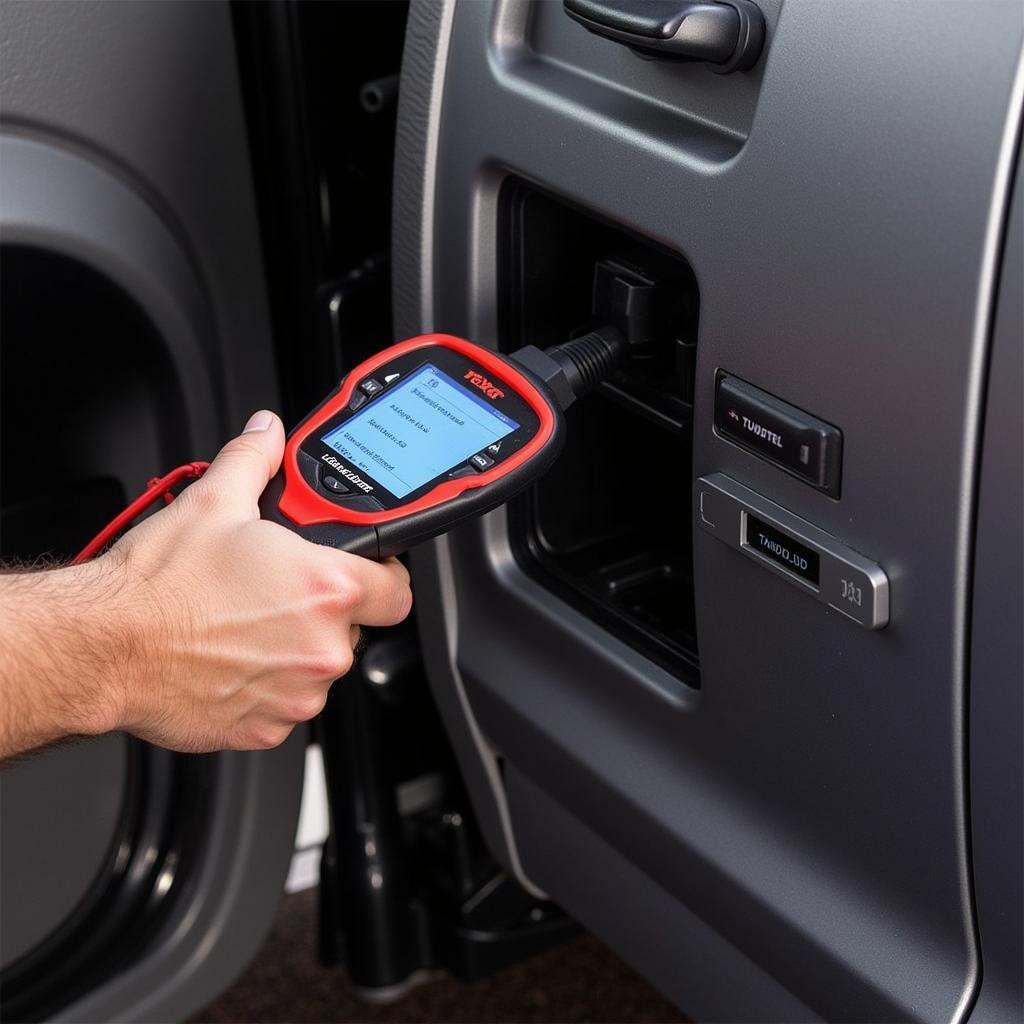The automotive world is rapidly evolving, and with it, the tools used for diagnostics and repair are becoming increasingly sophisticated. One such tool making waves in the industry is the Surface Go Diagnostic Tool. This powerful yet portable device is transforming how mechanics and car enthusiasts approach vehicle diagnostics, offering a versatile and efficient solution for identifying and resolving car problems.
 Mechanic using a Surface Go diagnostic tool on a car
Mechanic using a Surface Go diagnostic tool on a car
Why Choose a Surface Go for Car Diagnostics?
While traditional standalone diagnostic tools have long been the go-to solution for many, the Surface Go offers a compelling alternative with several key advantages:
- Portability: Unlike bulky traditional scanners, the Surface Go’s compact size makes it incredibly portable, allowing technicians to easily move around the vehicle and workshop.
- Familiar Interface: Running on the familiar Windows operating system, the Surface Go provides an intuitive interface for users already accustomed to Windows devices, minimizing the learning curve.
- Power and Performance: Don’t let its size fool you; the Surface Go packs enough processing power to run demanding diagnostic software smoothly, ensuring quick and accurate results.
- Versatility: Beyond diagnostics, the Surface Go doubles as a regular tablet, enabling mechanics to access repair manuals, research error codes, watch instructional videos, and even manage customer records all on one device.
How to Use a Surface Go as a Diagnostic Tool
Utilizing a Surface Go for car diagnostics is a straightforward process:
- Choose Your Software: Several reputable diagnostic software options are available, such as those specifically designed for certain car brands or those offering broader compatibility.
- Get an OBD-II Adapter: Connect your Surface Go to your vehicle’s OBD-II port using a compatible Bluetooth or USB adapter.
- Install and Launch: Install the chosen diagnostic software on your Surface Go and launch it.
- Connect to Your Car: Follow the on-screen prompts to establish a connection between the Surface Go and your vehicle’s onboard computer.
- Start Diagnosing: Once connected, you can read and clear error codes, view live data streams from various sensors, perform actuator tests, and more, depending on the software’s capabilities.
Key Features to Look for in Diagnostic Software
When selecting diagnostic software for your Surface Go, consider these essential features:
- Vehicle Coverage: Ensure the software supports your vehicle’s make, model, and year. Some software offers wider coverage than others.
- Code Definitions: Detailed and easy-to-understand descriptions of error codes are crucial for efficient troubleshooting.
- Live Data Stream: The ability to view real-time sensor data helps pinpoint issues and monitor system performance.
- Graphing and Logging: Visual representations of data and the option to log data over time are invaluable for in-depth analysis.
- Special Functions: Some software provides advanced functionalities like coding, adaptations, and module programming, but these are typically more relevant for experienced professionals.
“The Surface Go has been a game-changer for our workshop,” says John Smith, Senior Technician at Smith’s Auto Repair. “The portability and ease of use are unmatched, and being able to switch between diagnostic software and other applications seamlessly has significantly improved our efficiency.”
Beyond Diagnostics: Other Applications for Surface Go in Your Workshop
The versatility of the Surface Go extends far beyond just vehicle diagnostics. You can leverage its capabilities for:
- Repair Manuals and Guides: Access digital repair manuals, wiring diagrams, and technical documents with ease.
- Customer Management: Maintain customer records, schedule appointments, and track repair histories.
- Inventory Management: Keep track of parts inventory, place orders, and manage suppliers.
- Training and Education: Watch instructional videos, participate in webinars, and stay updated on the latest automotive technologies.
Conclusion
The Surface Go diagnostic tool presents an innovative and powerful solution for modern automotive diagnostics. Its portability, familiar interface, and robust performance make it a valuable asset for both professional mechanics and car enthusiasts.
Need help with your automotive diagnostic needs? Contact ScanToolUS at +1 (641) 206-8880 or visit our office at 1615 S Laramie Ave, Cicero, IL 60804, USA. We offer a wide range of diagnostic tools and expert advice to keep your vehicles running smoothly.
FAQs
Can I use any OBD-II adapter with my Surface Go?
While most standard OBD-II adapters are compatible, it’s recommended to choose an adapter specifically designed for the diagnostic software you’re using to ensure seamless communication and data transfer. You can find excellent options for diagnostic tools for dead laptop motherboard as well.
Is a Surface Go diagnostic tool suitable for beginners?
Absolutely! The user-friendly interface of both the Surface Go and many diagnostic software options makes it easy for beginners to get started with vehicle diagnostics.
Can I use a Surface Go diagnostic tool on motorcycles or trucks?
The compatibility depends on the diagnostic software you choose. Some software caters specifically to cars, while others offer broader vehicle coverage, including motorcycles, trucks, and even heavy-duty vehicles. For instance, certain diagnostic tools used by chiropractors might share some functionalities.
Do I need an internet connection to use a Surface Go diagnostic tool?
While an internet connection is not always required, it can be helpful for downloading software updates, accessing online repair databases, and researching error codes. Some software might require an active internet connection for certain features. If you’re looking for a reliable solution for diagnosing your computer, you can check out the Windows HDD diagnostic tool.
What are the limitations of using a Surface Go for car diagnostics?
While the Surface Go offers a versatile diagnostic solution, it’s important to note that some advanced functionalities, like module programming or coding, might require specialized tools or software beyond the scope of a typical Surface Go setup.


